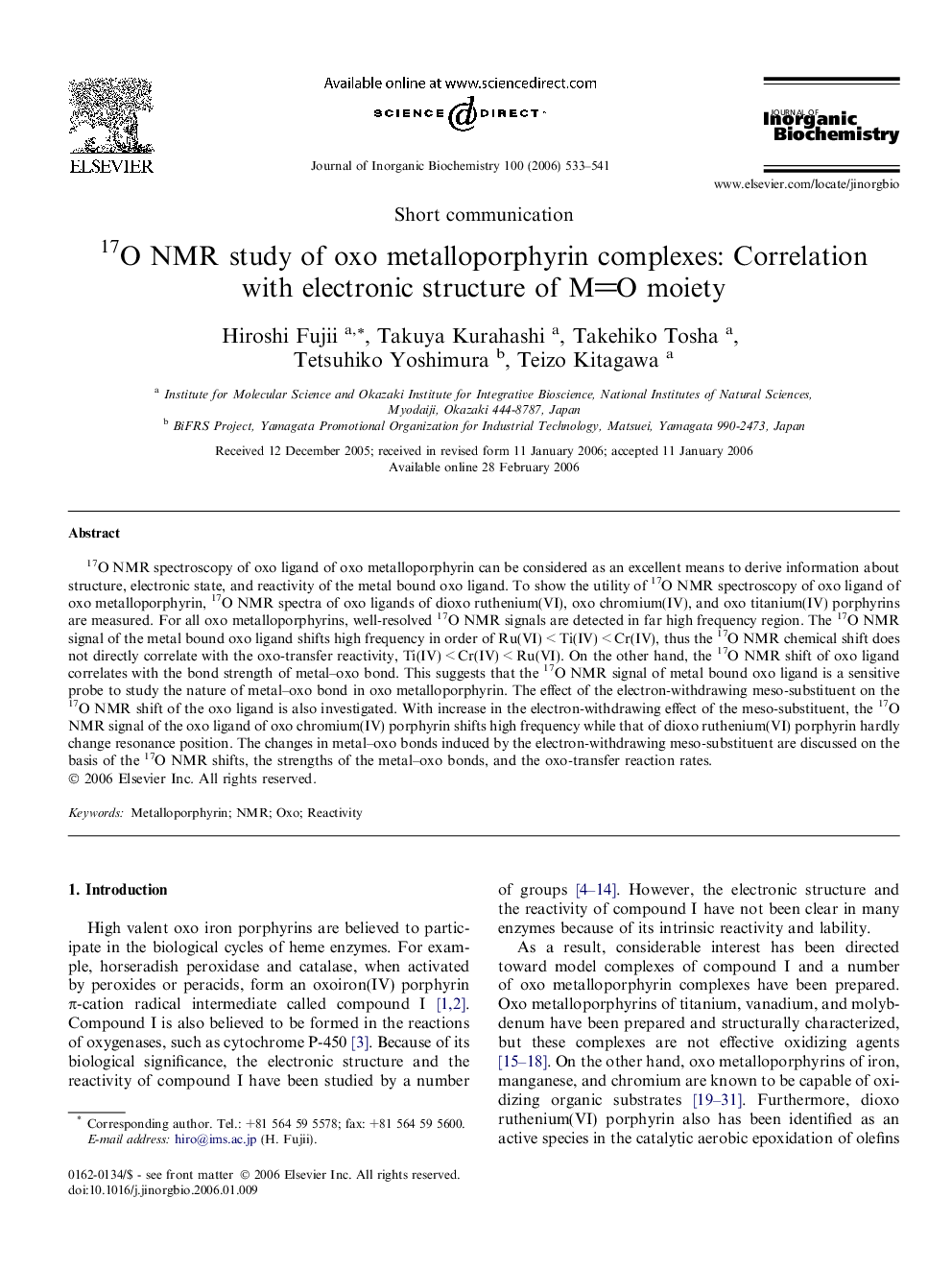| Article ID | Journal | Published Year | Pages | File Type |
|---|---|---|---|---|
| 1317640 | Journal of Inorganic Biochemistry | 2006 | 9 Pages |
17O NMR spectroscopy of oxo ligand of oxo metalloporphyrin can be considered as an excellent means to derive information about structure, electronic state, and reactivity of the metal bound oxo ligand. To show the utility of 17O NMR spectroscopy of oxo ligand of oxo metalloporphyrin, 17O NMR spectra of oxo ligands of dioxo ruthenium(VI), oxo chromium(IV), and oxo titanium(IV) porphyrins are measured. For all oxo metalloporphyrins, well-resolved 17O NMR signals are detected in far high frequency region. The 17O NMR signal of the metal bound oxo ligand shifts high frequency in order of Ru(VI) < Ti(IV) < Cr(IV), thus the 17O NMR chemical shift does not directly correlate with the oxo-transfer reactivity, Ti(IV) < Cr(IV) < Ru(VI). On the other hand, the 17O NMR shift of oxo ligand correlates with the bond strength of metal–oxo bond. This suggests that the 17O NMR signal of metal bound oxo ligand is a sensitive probe to study the nature of metal–oxo bond in oxo metalloporphyrin. The effect of the electron-withdrawing meso-substituent on the 17O NMR shift of the oxo ligand is also investigated. With increase in the electron-withdrawing effect of the meso-substituent, the 17O NMR signal of the oxo ligand of oxo chromium(IV) porphyrin shifts high frequency while that of dioxo ruthenium(VI) porphyrin hardly change resonance position. The changes in metal–oxo bonds induced by the electron-withdrawing meso-substituent are discussed on the basis of the 17O NMR shifts, the strengths of the metal–oxo bonds, and the oxo-transfer reaction rates.
